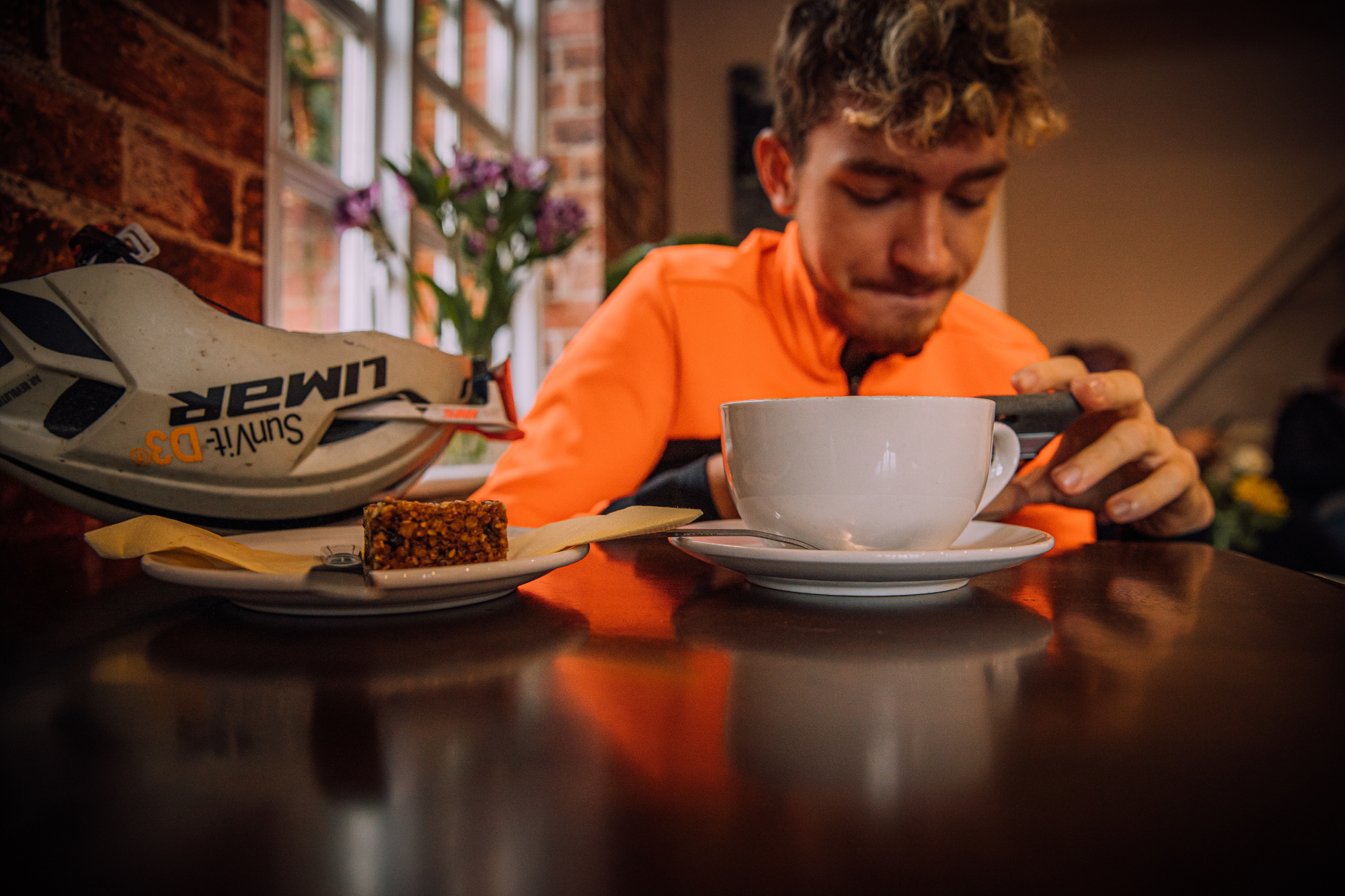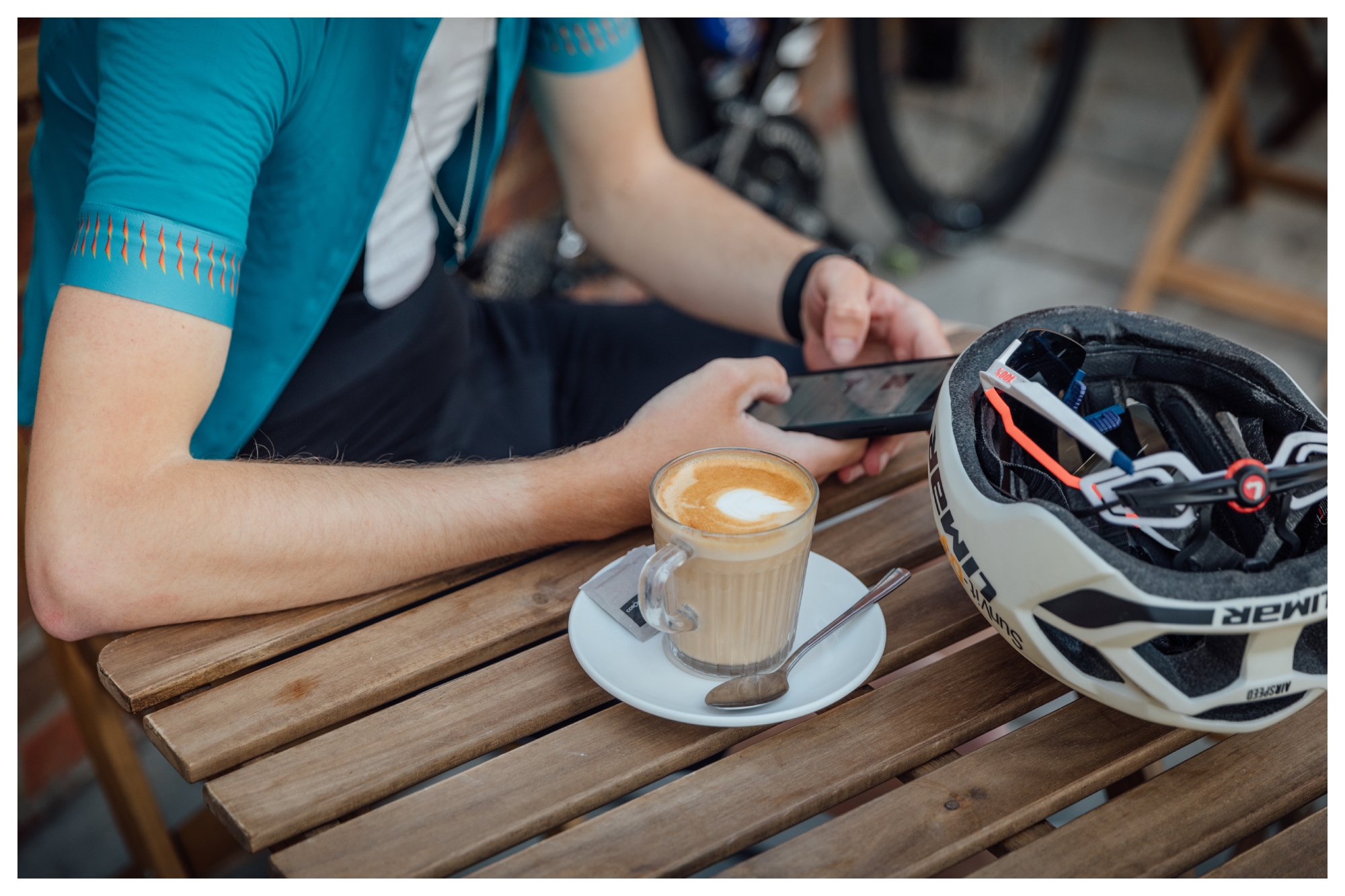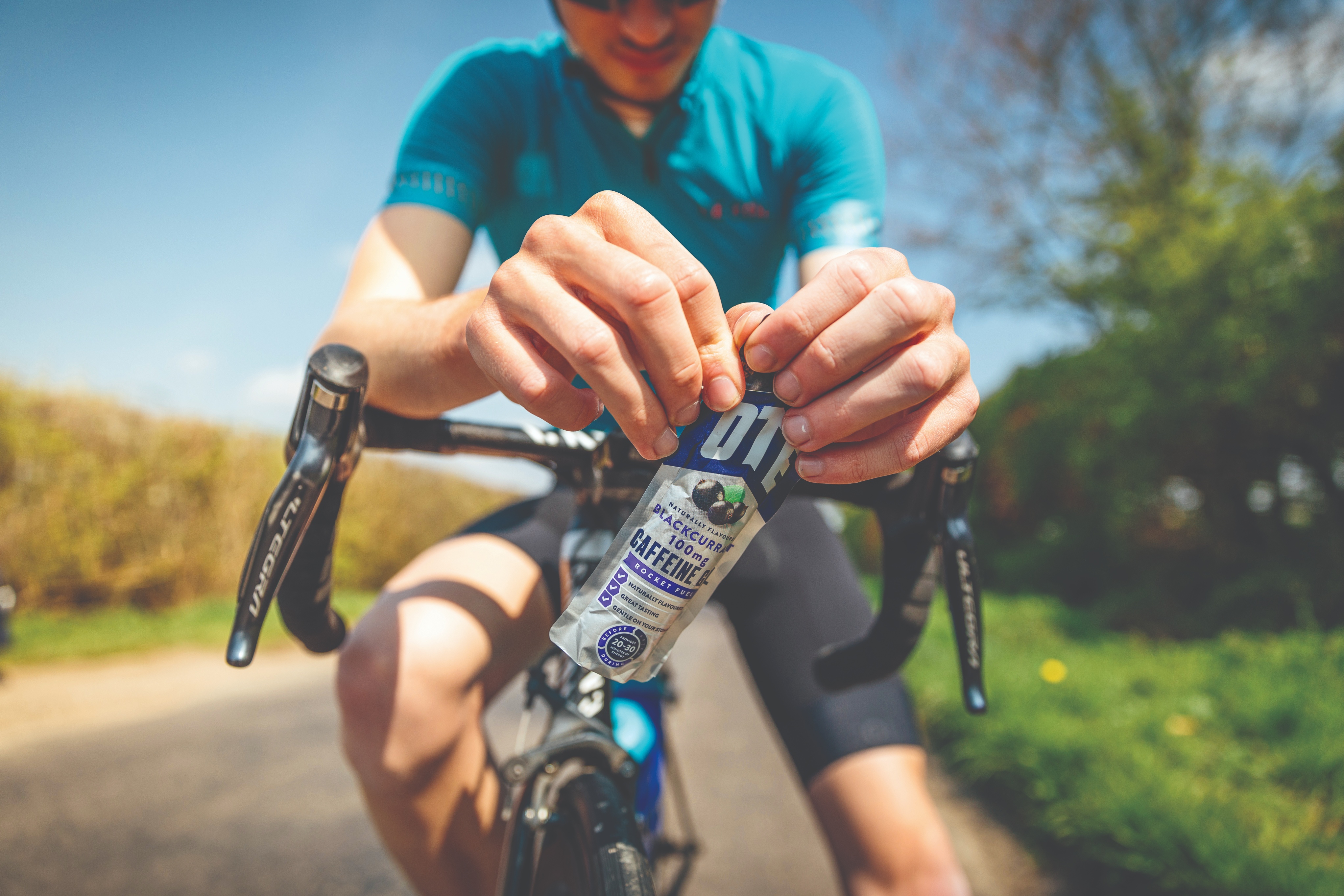Your Costa cappuccino could contain three times more caffeine than one from Cafe Nero - how can cyclists ensure they get the ideal boost?
Coffee and cycling may be inextricably linked, but does the black stuff really improve our performance on the bike? Lexie Williamson investigates

“Coffee culture is huge in cycling,” says Will Girling, head of nutrition at EF Education EasyPost. “Many of the team have their own Aeropress, and Rigoberto Urán even owns a coffee farm in Colombia and sometimes brings his own coffee along.” As professional athletes, every rider in the team hones the dose and timing of their caffeine hit to optimise its performance benefits by testing double espressos, gels and gum, with nutritionist Girling on hand for advice. But what about the rest of us?
With the caffeine content of supermarket-sold beans and cafe-bought flat whites varying enormously, and caffeine metabolism being different in each individual, it can be hard to know how to squeeze the best performance hit from the beloved bean. So let’s get stuck into all things caffeine and cycling.
First up, the performance-boosting effects of coffee. As cyclists, we’re familiar with the rejuvenating buzz that comes from the mid-ride coffee, bringing an energy spike and the sense we can push harder and suffer less. But is there hard evidence behind these sensations?
It turns out that there’s plenty of research on the ergogenic (performance-enhancing) effects of caffeine. A 2019 study investigated the effect of coffee ingestion on 5km cycling time trial performance. Thirty-eight participants (19 men and 19 women) ingested either coffee or a placebo. A third control group drank nothing. The cyclists in the caffeine group improved their time trial times by a startling nine seconds (men) and six seconds (women) compared with the placebo and control groups, who showed no improvement.
Another study entitled ‘Caffeine and Sprint Cycling Performance’ asked 13 male riders to complete a series of six-second sprints to elicit the highest peak power output (PPO). Researchers found a “clear effect of caffeine on sprinting performance”.
The right dosage

How much caffeine should we take? Optimal dosage is difficult to determine because the rate at which we metabolise caffeine varies from rider to rider. Some of us can’t face the day, let alone a three-hour ride, without a double espresso, while others feel anxious and jittery after just a weak brew. This difference is partly down to a coffee gene called CYP1A2, which appears to strongly influence our body’s sensitivity to caffeine.
‘Fast processors’ can consume more caffeine than slow processors because their livers break it down more quickly. As a side note, if you are a fast processor and feel it’s hard to get a perceptible caffeine ‘hit’, it might be worth abstaining for seven to 10 days, allowing your body to regain its sensitivity. The downside is possible withdrawal headaches.
The latest race content, interviews, features, reviews and expert buying guides, direct to your inbox!
| Row 0 - Cell 0 | Single shot espresso | Cappuccino | Filter Coffee |
| Cafe Nero | 45mg (30ml) | 110-115mg (355ml) | n/a |
| Costa | 100mg (30ml) | 325mg (362ml) | n/a |
| Greggs | 75mg (28ml) | 197mg (341ml) | 225mg (341ml) |
| Pret | 180mg (30ml) | 180mg (350ml) | 271mg (350ml) |
| Starbucks | 33mg (25ml) | 66mg (350ml) | 102mg (350ml) |
It’s hard to calculate the amount of caffeine in your coffee, as this varies highly from brand to brand and coffee shop to coffee shop (see above). Total caffeine in a cup ranges from 45 to 180mg. The recommended daily safe upper limit for healthy adults is 400mg per day, so that’s about three to four cups depending on the source.
Caffeine content in coffee is influenced by many factors including the origin of the beans, brewing method, water temperature and degree of pressure. According to a 2021 study entitled ‘Influence of Various Factors on Caffeine Content in Coffee Brews’, espresso machine coffee had the highest caffeine content per litre of brew – a fact many cyclists have known instinctively for decades. Further complicating things, methods where the coffee sits in the water for longer, such as drip or press techniques, produce high caffeine levels, as do methods that use a higher ratio of coffee to water – hence the popularity in the cycling world of the Aeropress. The optimal dose for performance is 3-6mg per kilo of body weight, equating to 225-450mg of caffeine – two to four cups of coffee – for a 75kg cyclist. That said, lower doses may still have an ergogenic effect. Besides, the only way to be 100% sure of your dosage is to use gels or other caffeine supplements such as gum or tablets.
Regarding the timing of the dose, the effect of a cup of coffee can be felt after 10 minutes and reaches peak concentration levels in the blood after 30-60 minutes, with the stimulating effects lasting for three to six hours. If you are a ‘fast metaboliser’ or drink coffee regularly, you can get away with consuming your caffeine just 30 minutes before setting off. According to Girling, EF Education-EasyPost riders are fans of caffeine chewing gum before precisely timed events such as TT races, as it takes only 15-20 minutes to peak in the body and will continue to enhance performance for up to four hours.
Just don’t chug down that espresso before you’ve even pulled on your Lycra. According to the doctor and broadcaster Michael Mosley, drinking coffee first thing on an empty stomach triggers the release of stress hormones such as cortisol and adrenaline, which can lead to gut issues and start a spike-crash cycle. Mosley’s advice is to rehydrate after sleep first with a large glass of water and have breakfast before consuming coffee. He recommends putting off your first coffee until after you’ve done some light exercise outside, for example, walking the dog. Breakfast done, dog walked, you are primed for your first coffee of the day. Or you could just wait for the cafe stop, of course.
Caffeine’s effects
Dial in the dose
It can be tricky to know how much caffeine to take to gain the optimum performance-enhancing benefits. Will Girling, head nutritionist at EF Education-EasyPost (willgirling.com) provides the following guidelines.
45-60 minute session
“If you’ve signed up for a Zwift race or are doing a ramp or FTP test, taking caffeine can help hit your targets,” says Girling. The same applies to a short TT race. Take 3-6mg/kg body weight an hour before you start. For a session this short ‘precaffeinating’ is sufficient; there’s no need to top up midway through the session.
3-4 hour club ride
“If heading out first thing, take a high dose of caffeine after breakfast, as it will help speed up the absorption of carbohydrate,” Girling advises. The exact amount to consume depends on your weight but a high dose for a larger male is typically 3-6mg/kg of caffeine, or two to four shots of espresso. Consume these an hour before you start riding, and top up halfway through.
4-hour race
Most EF Education-EasyPost riders drink coffee at breakfast or on the bus, which is equipped with an espresso machine. Each rider knows exactly how much works for them. “They’ll do a specific dose that they’ve practised many times before,” explains Girling. On the bike, riders consume one or two gels containing 75mg caffeine per gel an hour from the end.
6-hour race
Even though this is a longer timeframe, the plan for caffeine consumption for EF Education-EasyPost riders is similar. “Caffeine has a long half-life – the time it takes for the initial amount of the substance in your body to reduce by half. It’s not used up like carbohydrate,” explains Girling. “This is why the top-up is still just a small amount.”
Even though this is a longer timeframe, the plan for caffeine consumption for EF Education-EasyPost riders is similar. “Caffeine has a long half-life – the time it takes for the initial amount of the substance in your body to reduce by half. It’s not used up like carbohydrate,” explains Girling. “This is why the top-up is still just a small amount.”
Coffee makes us feel more alert and focused because it stimulates the central nervous system. Throughout the day, a chemical called adenosine builds up in the brain and causes sleepiness. Caffeine blocks adenosine receptors, resulting in a feeling of wakefulness – that sense of mental clarity from caffeine can in itself enable you to push harder.
Then there are the various physiological effects. “Caffeine can enhance a cyclist’s performance by modulating various physiological pathways,” explains Jonathan Baker, a sports physiologist at Cyclefit. “Primarily, it enhances endurance performance by mobilising fatty acids, thereby sparing muscle glycogen and extending the duration of exertion before fatigue.”
As we have learnt already, caffeine also primes us for action. “It triggers the release of epinephrine [adrenaline],” continues Baker, “which prepares the body by increasing heart rate, improving blood flow to muscles, and elevating the body’s ability to metabolise fats. Finally, caffeine may increase the production of endorphins, which can elevate mood and reduce pain perception during exercise.”
Despite all these positive effects, it is possible to have too much of a good thing when it comes to caffeine. The recommended upper limit for daily caffeine consumption is 400mg. Exceed this and you may experience headaches, insomnia, an upset stomach and anxiety. Extreme overdose on caffeine is potentially fatal, but such high levels are unlikely just from drinking coffee – unless you go on an all-day Starbucks crawl. Riskier are the high-dose gels or supplements, so pay close attention to the amounts of caffeine contained.
Large amounts of caffeine are also thought to affect the body’s uptake of vitamins and minerals. For example, it can temporarily reduce iron absorption by up to 90% while also disrupting the metabolism of calcium, vitamin D and the B vitamins. These effects are short term and do not result from caffeine consumed at lower doses.
You may have heard it said that caffeine is a diuretic that increases urine production and potentially reduces hydration levels. However, there’s little in the way of hard science to back this up. A study by performance nutritionist Sophie Killer at the University of Birmingham gave 50 coffee drinkers a moderate caffeine dose of 4mg/kg body weight. Killer and her team found that coffee, “when consumed in moderation by caffeine-habituated males, contributes to daily fluid requirement and does not pose a detrimental effect to fluid balance.”
Coffee does induce heart palpitations in some people – to whom the British Heart Foundation (BHF) advises abstinence. It has also been shown to increase blood pressure, but according to the BHF, this effect is temporary and lessens with habituation to caffine.
Pros and cons

Another common claim is that caffeine helps us burn fat. A 2022 systematic review of this topic considered 94 studies involving a total of 984 participants. It reported a “highly significant but small” effect of caffeine in increasing fat metabolism. Another study suggested that large doses would be required to have any significant effect on metabolism – seven cups of coffee for someone weighing 68kg. Th is is, of course, above the recommended upper limit, so a far more dependable way to burn fat is to get on your bike.
The best-known downside of caffeine is its tendency to disrupt sleep. By blocking adenosine receptors, caffeine increases the fi ring of neurons and the release of adrenaline, making us feel wide awake. According to a study from the Journal of Clinical Sleep Medicine, 400mg of caffeine takes up to six hours to metabolise and may reduce sleep by more than an hour. Even after 12 hours, one-quarter of the caff eine consumed is still present in the body. So aim to have that last coff ee by 5pm if you want to feel bright-eyed and bushy-tailed for your morning ride.
In conclusion, research indicates that caffeine can enhance endurance, increase average speeds and improve mental focus for cyclists. However, optimal dosage and timing varies greatly among individuals, and excessive caffeine intake can lead to adverse eff ects such as insomnia, disrupted hormone levels and an upset stomach. Despite its potential benefits, cyclists should approach caffeine consumption mindfully, considering your personal sensitivity and how to get maximum gain while minimising unintended effects. Ultimately, when used judiciously, caff eine can provide a meaningful performance boost as well as a pleasant pick-me-up.
Fitness instructor Lexie Williamson specializes in yoga for runners and cyclists and is the author of Yoga for Cyclists ($28 / £20, Bloomsbury Publishing).